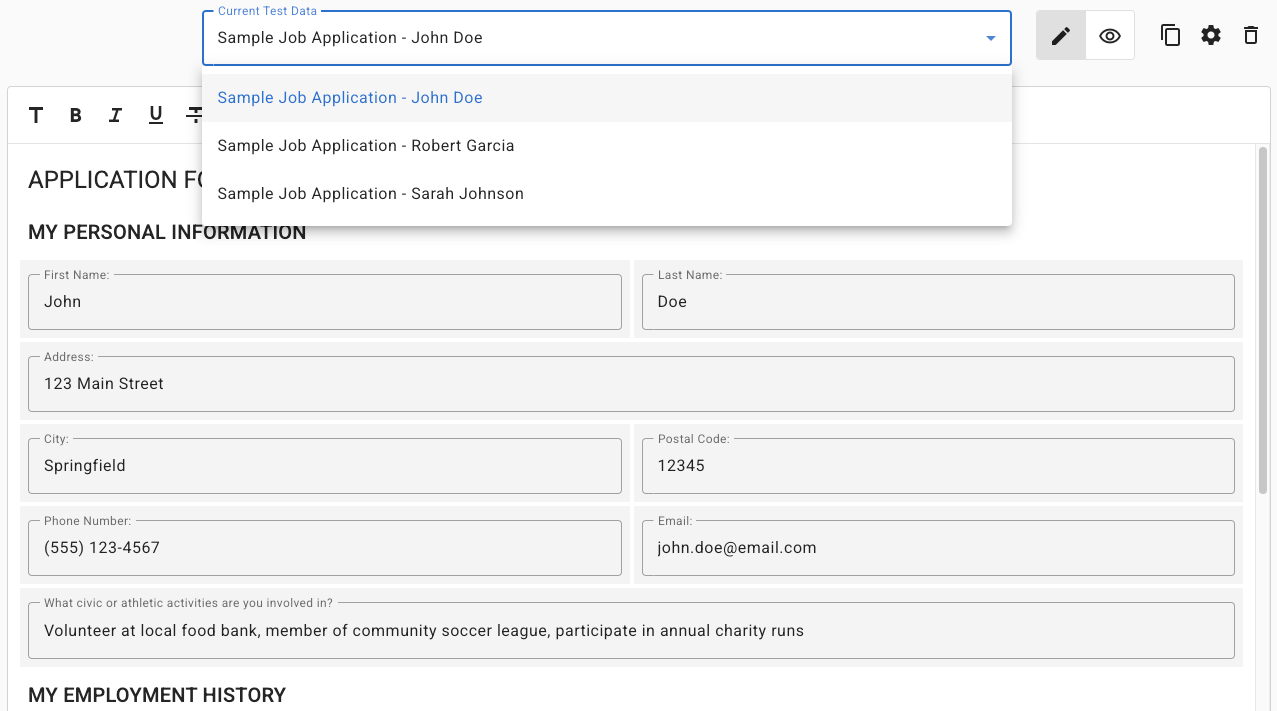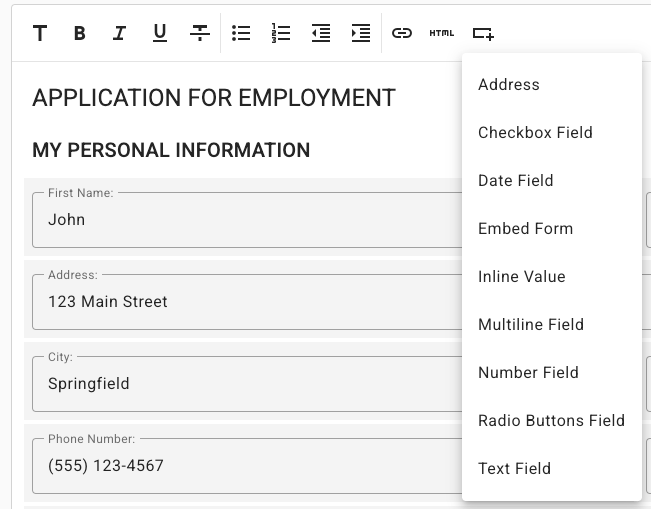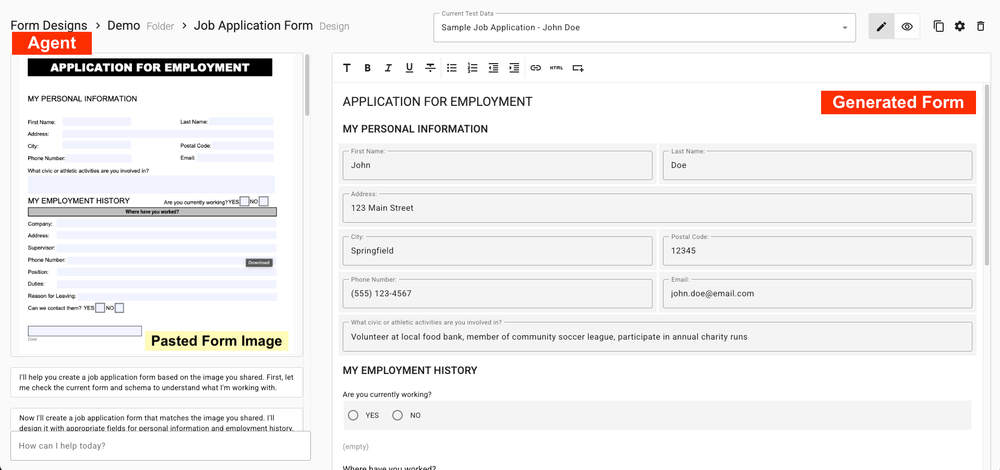How we cut form development time by 85% with one simple conversation
Most AI tools promise to help with development but fail when you need them for real work. They don’t understand your component library, require extensive prompt engineering, and generate code that doesn’t work in your environment.
Page Agent is different. It sits directly in your development workspace and speaks your technical language.
The Real Demo: PDF to Working Form
Here’s what actually happened in our demo. A user uploaded a PDF job application template and said: “Create a job application form based on this image.”
Page Agent analyzed the PDF structure and immediately generated a complete HTML form using our approved Angular components—no explanation of our tech stack required.
When the user requested “Make all rows take the entire width”, Page Agent instantly understood and adjusted the layout while keeping related fields like city/postal code on the same row.
When asked to “Populate test data”, Page Agent created three realistic personas:
- John Doe: Currently employed senior developer
- Sarah Johnson: Recent graduate with internship experience
- Robert Garcia: Career changer from finance to technology

AI automatically generates realistic, contextually appropriate test data
Total time: Under 5 minutes. What used to take our developers 60-90 minutes happened in one conversation.
Why Generic AI Fails (And Page Agent Succeeds)
| Generic AI Approach | Page Agent Approach |
|---|---|
| 🔴 Generate generic HTML | 🟢 Uses your component library |
| 🔴 Components don’t match your system | 🟢 Perfect compatibility from start |
| 🔴 Manual fixes required | 🟢 Works immediately |
| 🔴 Create test data by hand | 🟢 AI generates realistic test data |
| 🔴 Debug integration issues | 🟢 Natural conversation adjustments |
| ⏱️ Total: 60-90 minutes | ⏱️ Total: Under 5 minutes |
The key difference: Page Agent knows your component library and generates code that works immediately in your environment instead of generic code that needs extensive fixes.
The Business Impact
Speed: Forms that took 60-90 minutes now take under 5 minutes.
Quality: Every form uses approved components with zero compatibility issues.
Responsiveness: Client customization requests happen during live calls instead of follow-up meetings.
The Technical Secret
Page Agent succeeds because it’s embedded in your actual development workspace with direct access to your component library.

Page Agent knows every approved component and its exact attributes
Instead of explaining what components exist, Page Agent already knows:
apex-text-fieldfor text inputsapex-select-fieldfor dropdownsapex-sectionfor grouping- Every attribute and configuration option

AI configures components using the same dialogs your developers use
When Page Agent generates HTML, it’s not generic code—it’s your specific components configured correctly for your framework.
The Natural Conversation Experience
What impressed our team most wasn’t the technology—it was how natural the interaction felt:
User: “Create a job application form based on this image”
Page Agent: Creates complete form with proper sections and fields
User: “Make all rows take the entire width”
Page Agent: Adjusts layout while keeping related fields grouped
User: “Populate test data”
Page Agent: Generates three realistic personas with complete details
No prompting strategies. No technical explanations. Just normal conversation that produces professional results.
Implementation for Business Leaders
Start Small: Choose one repetitive task where your team follows predictable patterns. Forms work well because they use standard components and follow consistent layouts.
Embed in Existing Tools: Don’t build separate AI interfaces. Put AI directly into the tools your team already uses daily.
Constrain for Quality: Limit AI to approved components and patterns. Constraints improve results, they don’t limit them.
Measure Real Impact: Track time savings on actual tasks, not theoretical capabilities. Our 85% reduction is measured on real form development work.
What This Means for Your Business
Page Agent represents a fundamental shift in how AI can support development teams. Rather than fighting against AI limitations, we designed AI that works within our existing constraints.
The results speak for themselves: forms that previously required significant developer time now happen through natural conversation. Client requests that used to mean “we’ll get back to you” now get implemented during the call.
This approach scales beyond forms. Any repetitive development task with predictable patterns becomes a candidate for contextual AI. The key is embedding AI directly into your team’s existing workflows rather than building separate AI tools.
Most importantly, your team stays focused on problems that require human creativity and judgment while AI handles the routine technical work.
Page Agent proves that practical AI success comes from understanding your environment, not from general intelligence. When AI knows your component library and works within your constraints, it transforms from a curiosity into a productivity multiplier.
Ready to see how contextual AI can transform your development workflow? Schedule a call with our team to explore how Page Agent’s approach could work for your specific technical environment and business needs.




